NATO is a Farce, Part 8: Europe Builds Its Own “Military Industrial Complex”
The EU is poised to leverage its authoritarian power to become a self-financed supranational entity that more closely resembles a “United States of Europe”.

This is another instalment that focusses primarily on Europe. This article exposes how the EU’s transatlantic Neocons are scheming to create their own Military Industrial Complex that is independent of — but complementary to — that of the United States.
The apparent goal of this “master plan” is to allow Europe to wage war on Russia while the US devotes itself to defeating China.
But this move also has a more sinister by-product: the establishment and direct funding of an EU-level military industrial complex will empower the technocrats in Brussels to consolidate power and become more like the US Federal Government in Washington, but without even the appearance of “democracy”.
The changing nature of NATO demands EU action
As I described in the first article in this series, “NATO is a Dangerous Farce — and We All Know It”, the North Atlantic Treaty Organisation has changed drastically since the end of the Cold War and the fall of the Soviet Union.
Specifically, NATO has gone from being a defensive alliance built to take on the USSR and its Warsaw Pact allies to being a more “offensive” structure with a wide-ranging remit to undertake what they euphemistically call “out of area” military operations such as those waged in Yugoslavia (1999), Afghanistan (2001), Iraq (2003), Libya (2011) and Syria (2014).
Moreover, as I described in my article, “NATO is a Farce, Part 3: Not Your Daddy’s NATO”, the composition, force strength and capabilities of NATO have been reduced to just a fraction (1/10th) of what they were during the height of the Cold War. Since 1990, NATO has gone from being a well-supplied, massive ground-based force ready to go toe to toe with the Russians to being a “boutique” force specialising in asymmetrical combat engagements, training and “capability building” operations.
It is no wonder, then, that European NATO allies were looking for alternative defence arrangements.
Europe’s “transatlanticist” leaders cling to US strategic goals
Just because the US was “pulling back” — both literally and figuratively — from its European NATO commitment, did not mean that the American vassals in charge of the European Union were any less dedicated to the American geopolitical posture and the strategic military and economic goals of the Neocons in Washington.
As I described in my article, “NATO is a Farce, Part 2: The Puppet Parade”, I explained:
“The fact is that for many European leaders, toeing the American line on all matters of foreign economic and military policy is not only acceptable, but axiomatic: they have been groomed by the US permanent state to always act in America’s interest — even if it clashes with the interests of their own people or their fellow Europeans.”
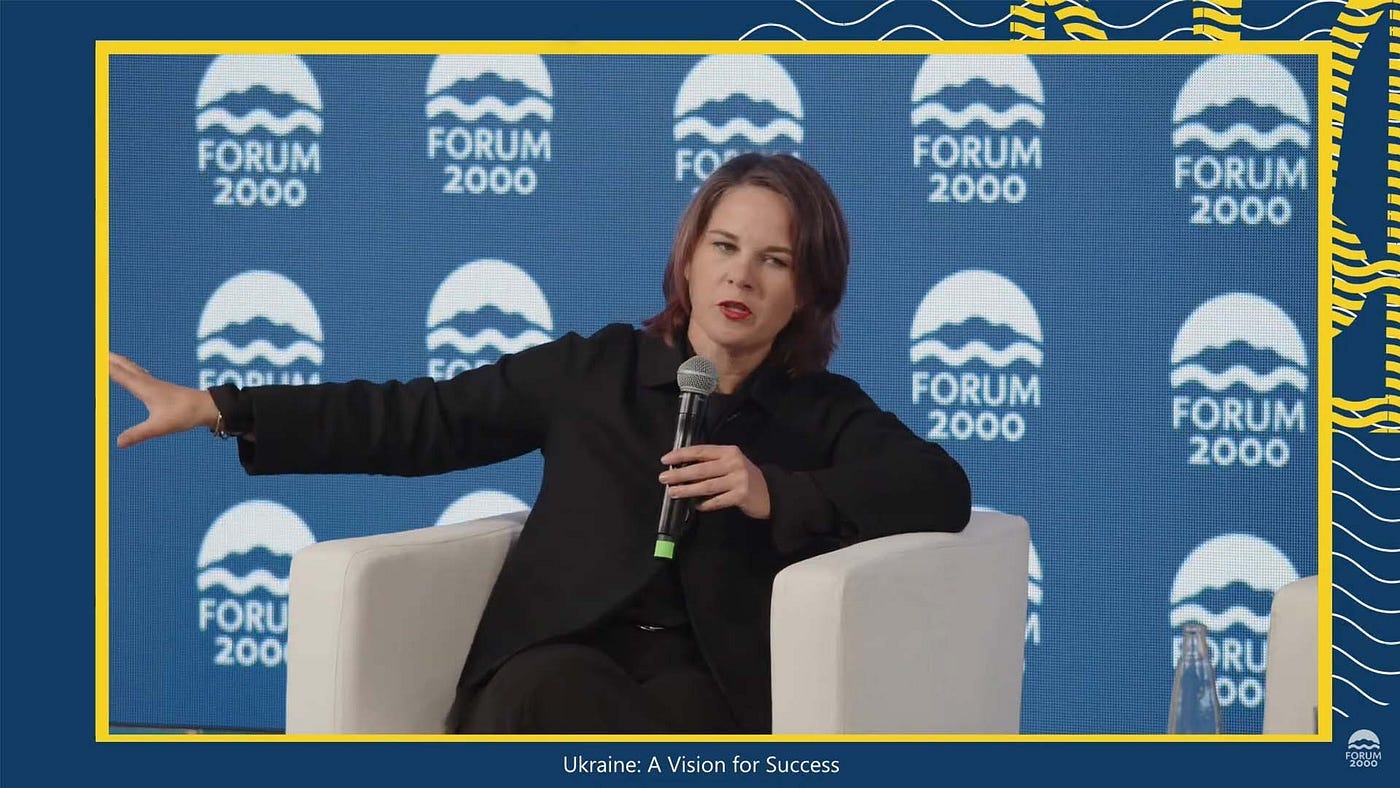
I went on to describe “a transatlantic production line that churns out US puppets ready-made for holding office in Europe.”
That production line is in full swing, and America’s European vassals are ever-ready to become proxies themselves in an “existential” struggle with America’s adversaries.
It’s still all about Russia
In my article, “NATO is a Farce, Part 4: Reviving Old Hatreds to Create New Conflict”, I detailed how the European NATO allies were even more fixated on Russia than are their counterparts in the US.
I focussed specifically on the Russophobes in Eastern Europe and the Baltic States, who were nursing a decades-old hatred of the Soviet Union and transposing the sins of Stalin onto the persona of Putin, holding the modern day Russian Federation responsible for the privations visited upon them by the USSR.
I singled out the Estonian Prime Minister, Kaja Kallas, who is universally regarded as Europe’s “Iron Lady” and “a fierce Russia-hawk”.
Kallas has even expressed the US strategic goal of “carving up Russia” into smaller states that can then be exploited for their resources. It is noteworthy that what Kallas was proposing is exactly what Washington think tanks like the Hudson Institute — as well as the US government itself — have been dreaming about since Putin took power in 2000.

In fact, I wrote about this extensively in my previous article, “Slaughtering Russia is U.S. Policy”.
And Kallas is not alone! It seems a memo must have gone out, because just a few weeks later, Polish President Andrzej Duda, also called for “decolonising” Russia at the recent Ukrainian “Peace Summit”.
Duda is not an idiot, but he is a fully committed transatlanticist. His positions are America’s positions. Poland does, after all, host the US’s Aegis missile batteries that are capable of delivering nuclear-tipped cruise missiles to Moscow with just a few minutes’ flight time.
Duda seems unconcerned that this “hosting” of missiles makes his country a primary target for any eventual Russian attack. In fact, now he wants the US to permanently position nuclear weapons on Polish soil as well.
Conflict with Russia has been planned since 2000
As mentioned above, the Neocon planners in Washington DC have been slavering over Russia’s resources and wealth since they were “kicked out” of Russia by Vladimir Putin, who effectively ended the “Wild East” economic policies of Boris Yeltsin.

In short, Putin put an end to the “Rape of Russia” after he took office in the elections of 2000. He started by pushing through a number of populist reforms for criminal, tax, and land laws (which had been opposed by oligarchs in the 1990s). The result was that the western “carpetbaggers” and financial hit men were immediately out of luck — and out of business.
This economic turnaround has led Vladimir Putin to become incredibly popular in Russia, even as he is despised in the West. I wrote about Putin’s staggering popularity in Russia in the article below:
It is no secret that the West has been wanting to get rid of Putin and his reforms ever since he took power. Overthrowing Vladimir Putin and carving up and then exploiting Russia is a top economic priority and a primary strategic goal.
In fact, we have already seen the process play out in Yugoslavia in the 1990’s and it is playing out today in Ukraine, where President Zelensky is making deals to sell off Ukrainian land and other resources to groups like BlackRock, Vanguard, DuPont, Cargill and other US multinationals.
I wrote about the ongoing economic pillaging of Ukraine in my article, “The US is up to its old colonialist “nation-building” tricks in Ukraine”.
The US and its allies have been trying to “decolonise” Russia for 24 years, and America’s transatlanticist vassals have fully bought into the programme.
In short, the “US puppets” in power in the EU and NATO know they have a role to play in maintaining and expanding American hegemony, and they are ready to “step up” militarily to make it happen.
The EU defence complex is years in the making
In 2016, two things happened that eventually changed the entire defence posture of the European Union.
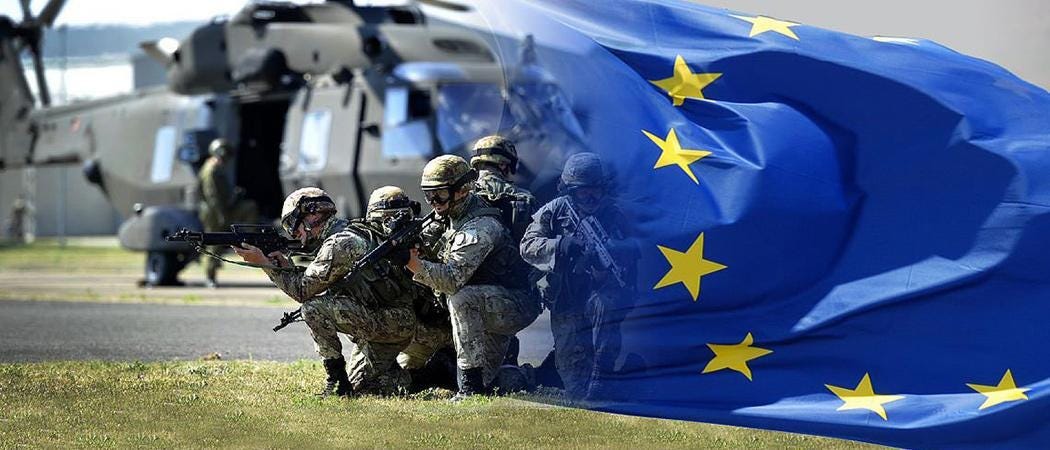
Brexit liberated the European hawks
In 2016, the United Kingdom voted to withdraw from the EU via their “Brexit” referendum. This had a liberating effect on the EU defence hawks, as the UK — perhaps because of their “special relationship” with the US — had been a hindrance to the development of a European defence complex:
“For the European defence efforts, getting rid of the UK’s torturous approach toward a common defence policy presented an opportunity the governments and European institutions eagerly seized…”
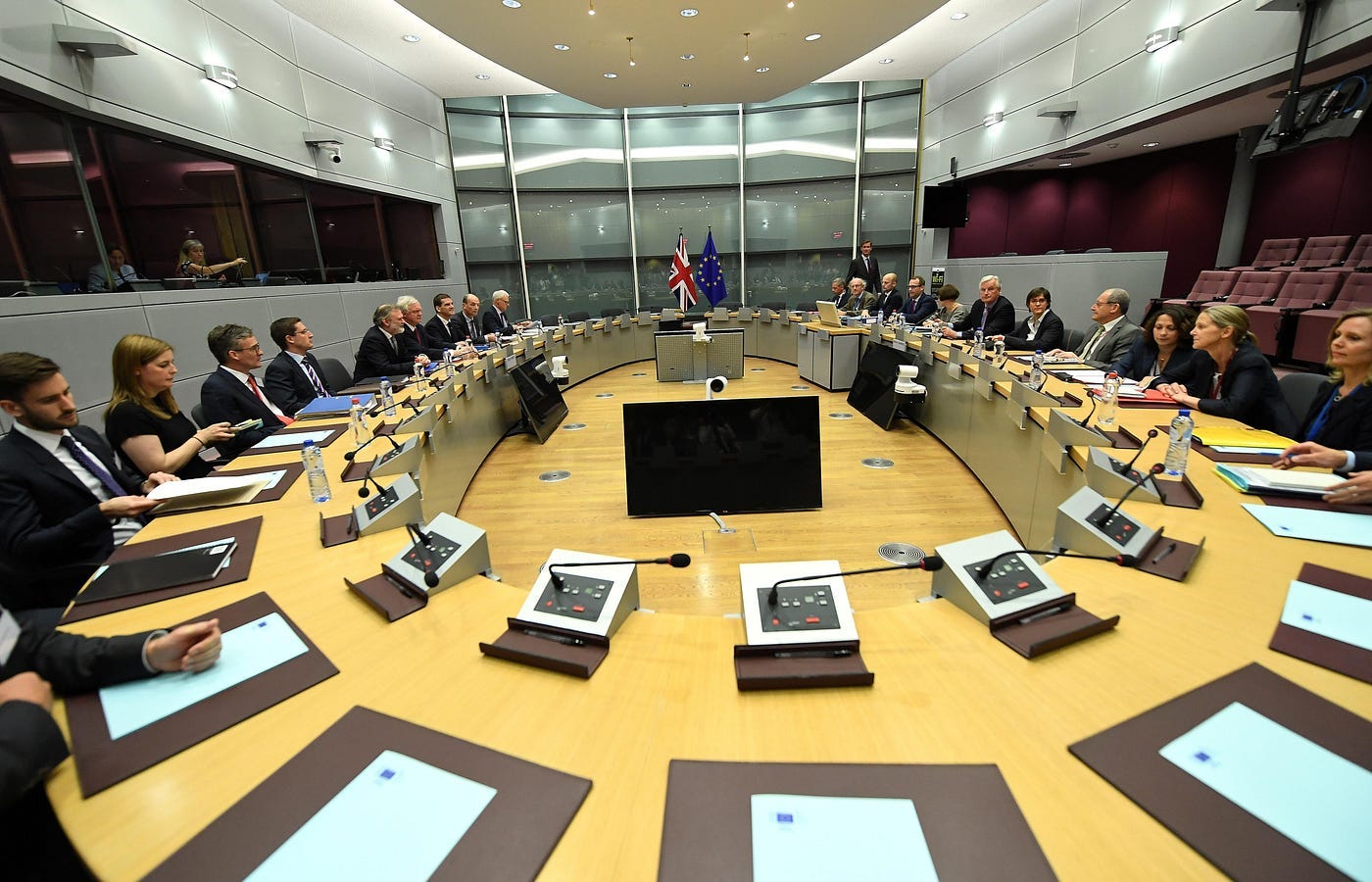
The resulting “boom” in defence complex development led the EU’s foreign policy chief Federica Mogherini to declare in November 2018: “We have achieved more in these last two years than we achieved in decades on security and defence in the European Union.”

The Trump Factor
The election of Donald Trump in 2016 was an unmitigated disaster for the Neocons on both sides of the Atlantic.
Generally speaking, Trump was seen to be an incompetent steward of the American Empire. He lacked the generational vision and gravitas that the Commander-in-Chief of the Great Hegemon needed. Instead, Trump was seen as an egoist, a narcissist, and a transactional “dealmaker” who lurched from one decision to another with no common motivating theme or conviction.
That said, there were three specific threats to the transatlantic Neocon project that Trump represented.

First, there was Trump’s broad antipathy towards NATO. He criticised the alliance, claiming that the European members were “freeloading” and failing to spend enough money on defence. He even indicated that the United States might not honour the Article 5 obligation to come to the defense of a NATO ally if that member was not paying enough into the alliance.
Second, Trump repeatedly mentioned that he might “pull the US out of NATO” altogether. This would probably destroy the alliance.
Thirdly, and perhaps most dangerously, Trump has said he wants to “get along with Russia”.
He has even uttered words of praise for Vladimir Putin, saying the Russian President was a “genius and “savvy” for invading Ukraine. And let’s not forget that Trump was even impeached for withholding US arms shipments to Ukraine.
Most troubling for any good warmongering Neocon: Trump has boasted that he would talk with Putin and “end the war in Ukraine within 24 hours”.
Trump’s positions are, of course, at odds with the greater Neocon project to overthrow Putin and break up the Russian Federation.
The Trump “threat” unified the EU
The first Trump Administration caused something rarely seen in the EU — a united front. It spurred the usually fractious Europeans into action — especially in the realm of defence:
“Faced with a US president spearheading unilateralism, and with the rules-based world order increasingly challenged, Europeans had to quickly come of age in terms of security and defence.”
“Europe’s fate” during a second Trump presidency would again depend on whether it can remain united. To that end, Europeans have been building an interrelated, integrated military organisation — onew which is pulling the soften fractious EU member states togather on an operation level.
This will perforce help the EU stand up to whatever a “rogue” Trump Administration may try to do.
As reported in POLITICO in April:
“We need to show unity as we did the last time he was around,” said Alva Finn, executive director of the European Liberal Forum, a Brussels-based think tank. “We solved it the last time and hopefully we’ll be able to do it again, if we stay united as a bloc, as we had been doing before.”
It was during the first Trump Presidency, for example, that EU countries signed the Permanent Structured Cooperation (PESCO) pact in 2017. This was the bloc’s first attempt to really combine and coordinate their various defence industries and forces. The agreement led to the structural integration of 26 of the 27 national armed forces of the EU.
Galvanised by the Trump “threat”, EU foreign and defence ministers in November 2018 agreed on 17 new armaments and military projects within the PESCO framework, including the development of new weapons systems and the establishment of a training facility for secret agents.

The militaristic juggernaut, spurred by the need to develop independent military capacity to combat the “Russian threat”, proceeded apace.
In November 2021, the European Council announced its “4th wave of new PESCO projects”:
“The Council adopted a decision today updating the list of projects to be undertaken under the EU permanent structured cooperation (PESCO). As a result, 14 new projects will be added to the list of the 46 existing ones that have been developed under PESCO since December 2017.”
These projects included air, sea, land, space and cyberspace initiatives- all designed to “deter a Russian threat”. Europe was moving forward without its “Big Brother” in Washington.
The European Defence Fund (EDF) was launched in June 2017. It was the first use of the EU budget to co-fund defence cooperation. On 29 April 2021, the EU Parliament agreed to fund the EDF with a budget of €7.9 billion as part of the EU’s long-term budget (2021–2027).
Donald Trump, by dismissing, denigrating, and threatening NATO, had given the Europeans a reason to militarise themselves.
But, unlike the US, the Europeans really only had one enemy: Russia.
And it just so happened that Russia was America’s enemy too. Happy coincidence? Or a greater plan?
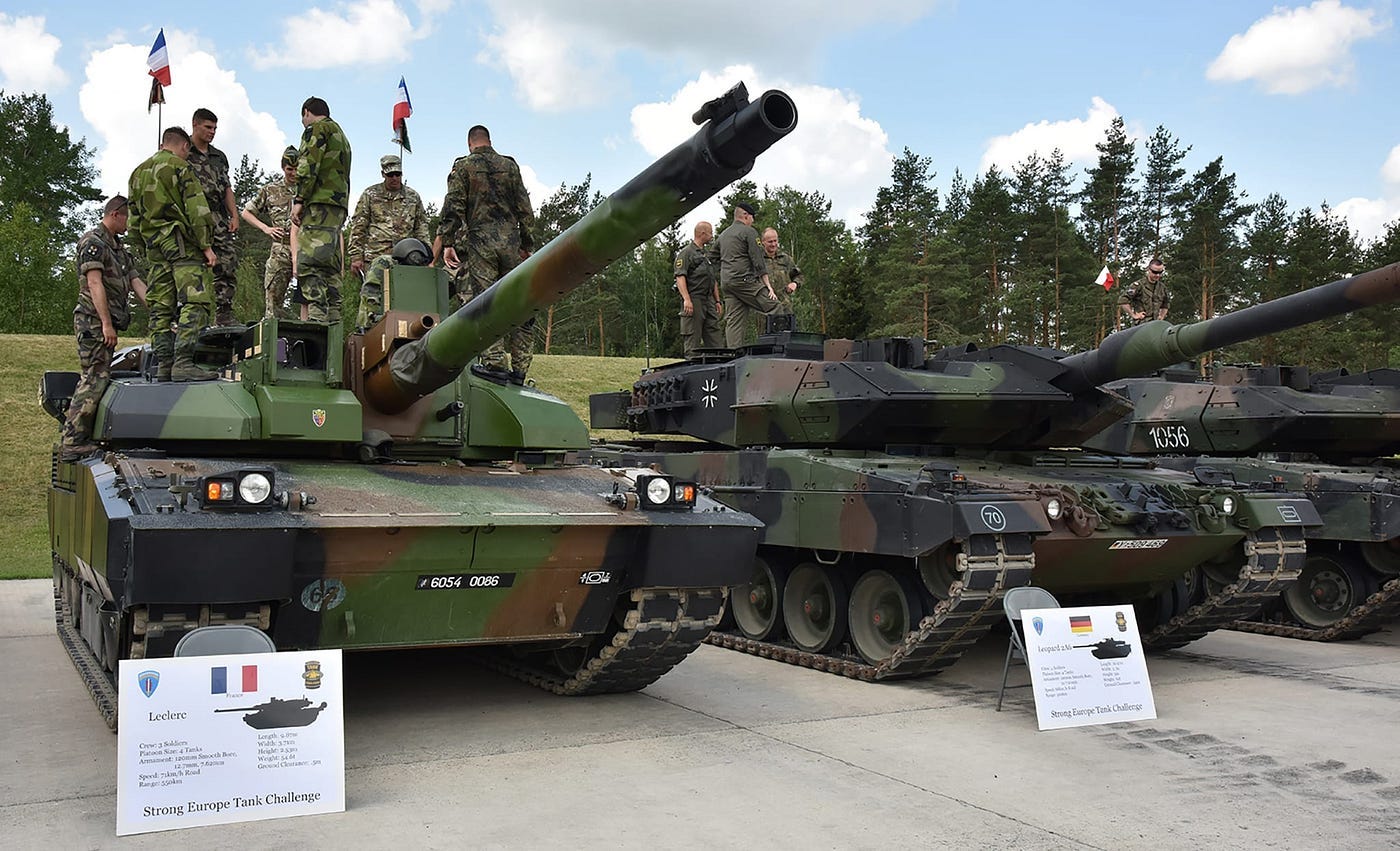
A fully fledged “European” defense and security complex
In the years since Trump’s first taking office, the EU has been busy building a complex, integrated structure of agencies and organisations to serve the needs of the European Union defence industry.
As I explained in my previous article, “NATO is a Farce, Part 6: Europe’s New Militarism”, the Europeans have, in effect, revived the Cold War and — more importantly — launched an arms race to match.
“Europe is in danger”
As detailed in my previous article, the European defence strategy revolves around the so-called “Strategic Compass”. Introduced in March 2022, a month after the start of the conflict in Ukraine, it is a critical and comprehensive document that outlines “an ambitious plan of action for strengthening the EU’s security and defence policy by 2030”.
Launched just one month after the start of Russia’s “Special Military Operation”, the Strategic Compass leaves little doubt as to its purpose: to prepare the European Union for a “great war” with Russia.
Indeed, when Josep Borrell, the High Representative for Foreign Policy and Security, introduced the Strategic Compass, he did so with the most bombastic doomsday rhetoric:
“Europe is in danger,” Borrell said in the foreword of the full strategy document. “All the threats we face are intensifying and the capacity of individual member states to cope is insufficient and declining,”
“We need to have rapid deployment capabilities,” he also told reporters. “We have a strategic responsibility. Citizens want to be protected. Soft power is not enough.”
The European Defense Industrial Strategy
On 5 March 2022, just a few weeks after the start of Putin’s SMO, the European Commission introduced their brand new European Defence Industrial Strategy:
“With Russia’s unjustified war of aggression against Ukraine, high-intensity conflict has returned to our continent. This is why a new, first-ever European Defence Industrial Strategy has been put forward.”
The past two years since the publication of the Strategic Compass have seen a whirlwind of activity in the EU defense sector, in which several new agencies, organisations and initiatives have been spun up.
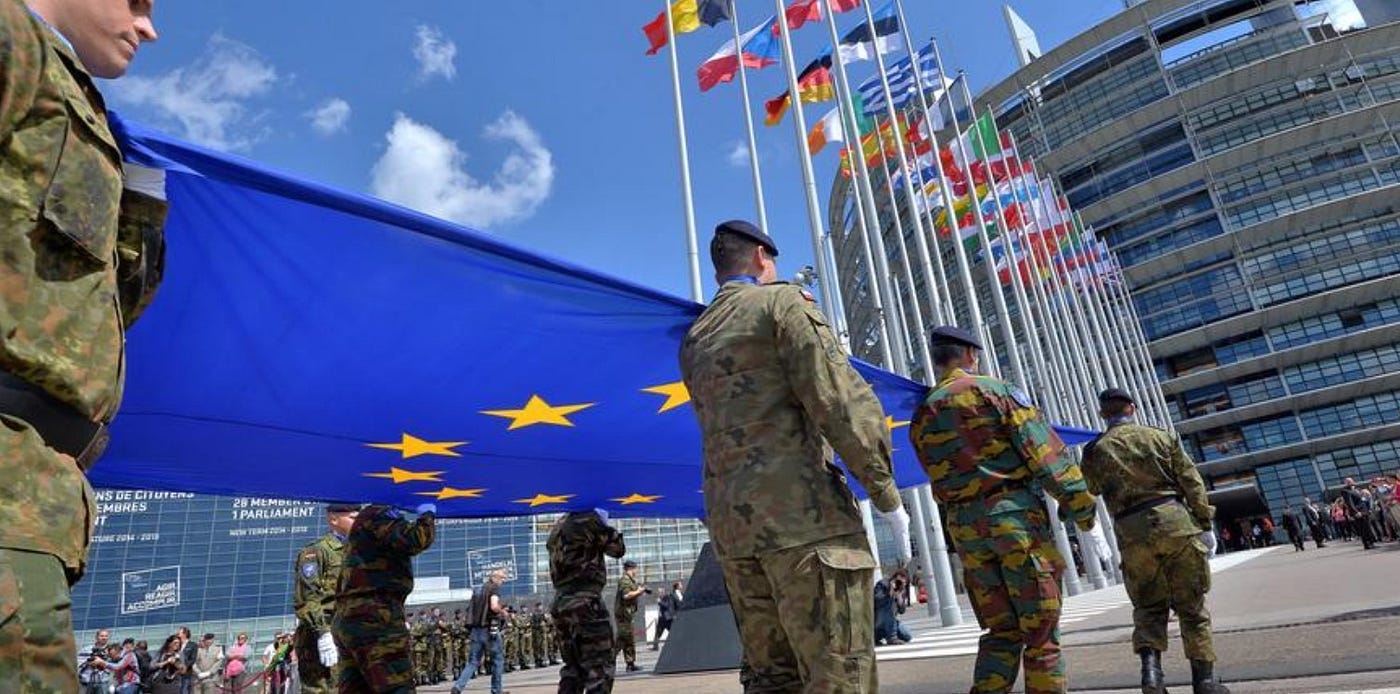
The centrepiece of the new EU defense structure is the European Defence Industrial Strategy (EDIS), which was launched in March 2024. The EDIS Factsheet states that the strategy aims to “strengthen the competitiveness and readiness of the European Defence Technological and Industrial Base (EDTIB)”.
The European Commission announced the new strategy with a clear impetus and reason for its necessity:
“Following Russia’s unprovoked invasion of Ukraine and the ensuing emergency responses, it is now time to move to structural EU defence readiness to better protect our citizens.”
Knowing that the EU and the EC move at a glacial pace, it seems amazing that they could come up with a fully baked Industrial Strategy for EU defence just days after the event that triggered its making.
Or perhaps, like the USA’s Patriot Act, the defence industrial strategy had already been drafted, and was just awaiting the right “inflection point” to launch?
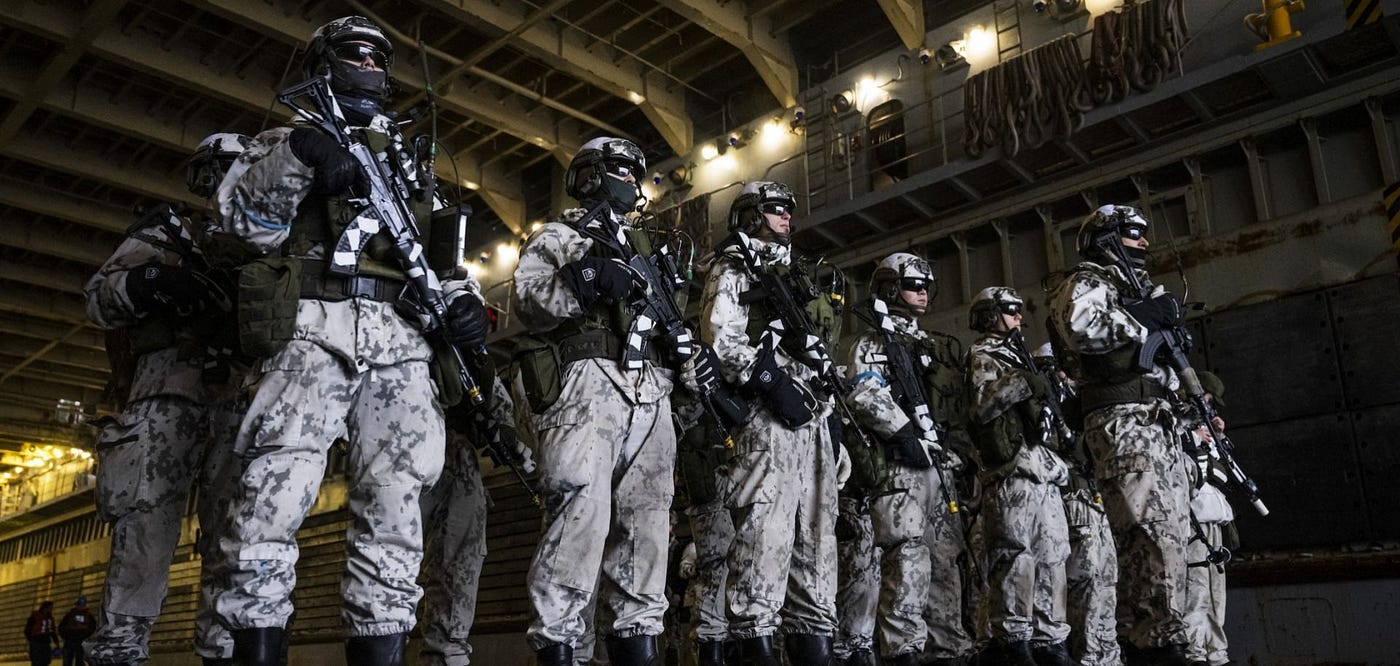
Let’s talk about the money
The Joint Communication issued with the release of the EDIS pays a lot of attention to the crisis in Ukraine and how that has highlighted the need for a European defence strategy:
“Faced with the return of high intensity warfare in Europe, following Russia’s unprovoked, full-scale invasion of Ukraine in 2022, the Union must swiftly enhance its defence readiness.”
But the EDIS Joint Communication also hints at the crux of the REAL challenge that is facing the European Union: defence industry finances:
“78% of the defence acquisitions by EU Member States between the start of Russia’s war of aggression and June 2023 were made from outside the EU, with the US alone representing 63%.”
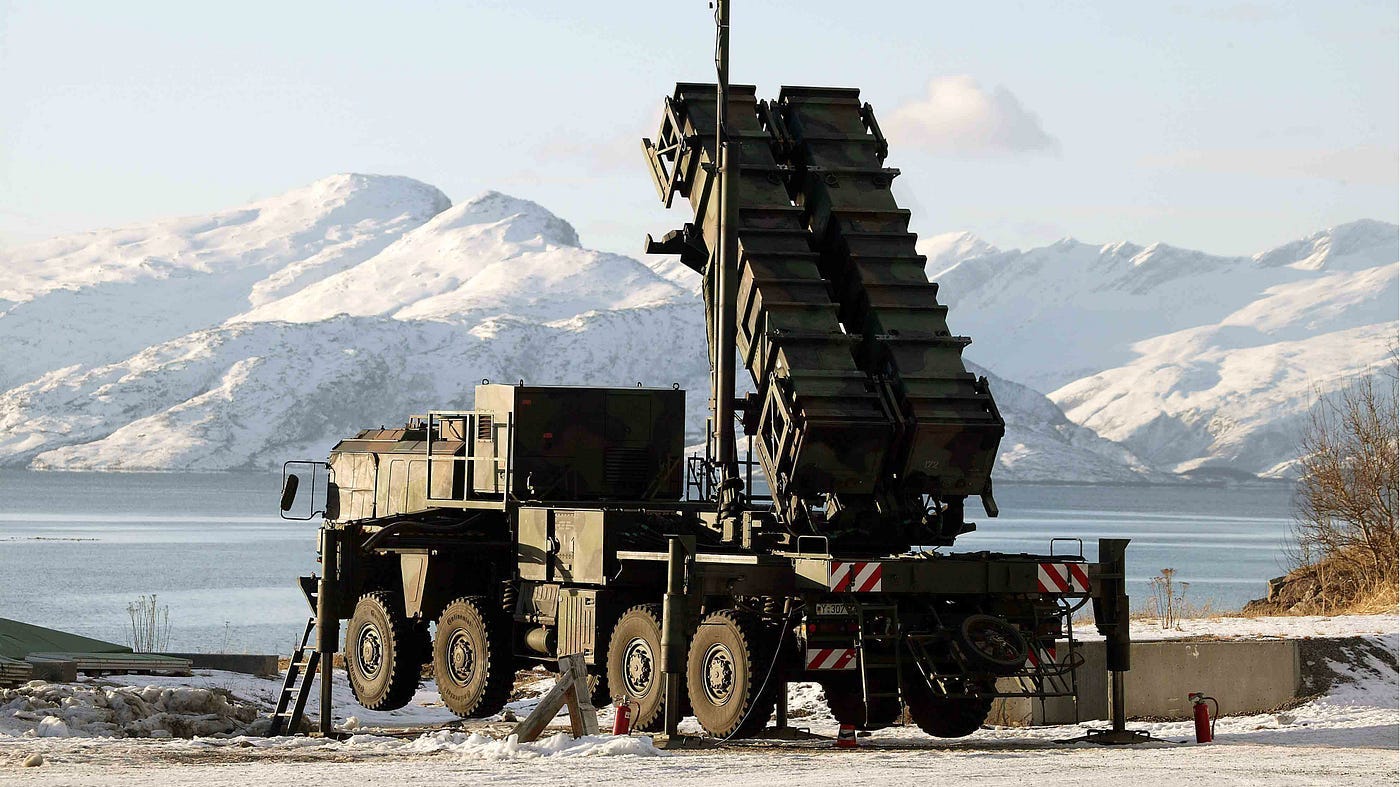
Clearly, a primary goal of the “strategy” was to create a European Military Industrial Complex so the EU could buy European weapons rather than American ones.
Indeed, the strategy document calls on member states to “make steady progress towards procuring at least 50% of their defence procurement budget within the EU by 2030 and 60% by 2035.”
A dedicated EU Defence Industry Commissioner
As a signal that the EU is taking the defence industry seriously, EC President Ursula von der Leyen has proposed creating a new post within the European Commission — a Commissioner for EU Defence Industrial Policy.
Speaking at the 2024 Munich Security Conference in January, Von der Leyen said: “If I would be the president of the next European Commission, I would have a commissioner for defense,” she said, adding: “this is a good portfolio”.
Now that she has been tapped for a second term, we can only expect that such a Commissioner will be named, most likely “from Central and Eastern Europe”.
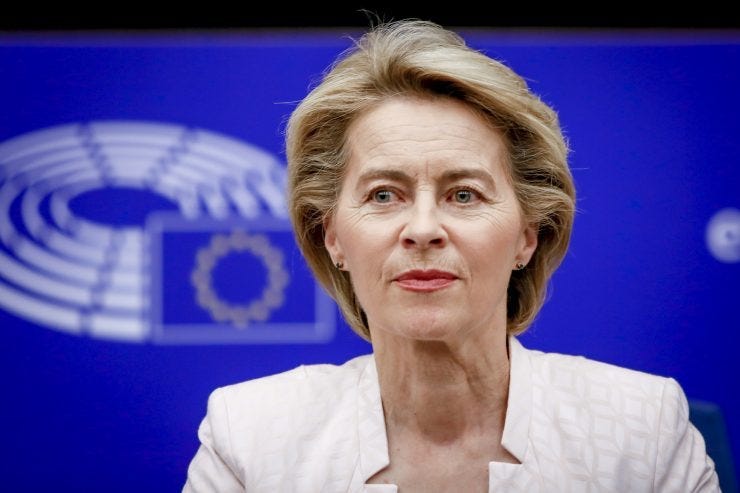
The European Defence Industry Programme (EDIP)
Part of that new Commissioner’s “portfolio” will no doubt include overseeing the European Defence Industry Programme.
The EDIP is a Regulation proposed by the Commission to start implementing concrete measures identified in the European Defence Industrial Strategy (EDIS). The EDIP plans to provide financial support with €1.5 billion from the EU budget over the period 2025–2027, as well as “promote cooperation with Ukraine on the recovery, reconstruction and modernisation of its defence industry”(!!).
But that €1.5 billion is not enough, and Ursula von der Leyen, along with Emmanuel Macron, Kaja Kallas, Josep Borrell, Kaja Kallas, Charles Michel and other EU war-hawks were prepared to do everything they could to increase that number by 500 times.
EU leaders call for a massive defence funding plan
Six months after the announcement of the European Defence Industrial Strategy, Jiří Šedivý, head of the European Defense Agency (EDA), told POLITICO:
“We hear from U.S. colleagues, actually advice: ‘Invest in your own strategic enablers, because there might come a time, and it could be pretty soon, when actually, we, the U.S., might be engaged fully elsewhere in Asia-Pacific and we will be simply unable to support you.’”
In support of my “already planned” theory about the EDIS, POLITICO goes on to explain that the drive to increase Europe’s home-grown defence industrial complex is not just about “Russia’s revanchism”:
“There is also a push from many powerful European countries to ensure the Continent does not have to rely on the U.S. military — or the powerhouse U.S. defense industry — to defend its own borders.”
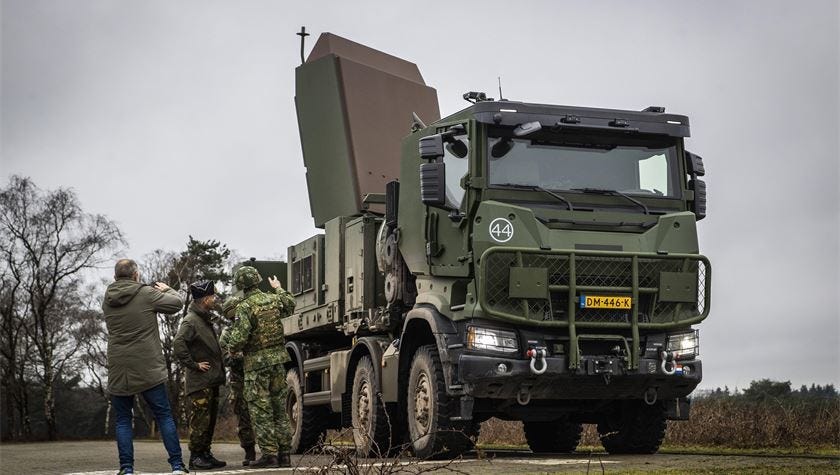
Ursula wants €500 billion for EU defence
On June 27, 2024, EC President Ursula von der Leyen declared that the EU would need to spend €500 billion on defence over the coming decade.
It should be noted that the current European Defence Fund is only €8 billion.
The European Commission chief justified the proposed expenditure by fear-mongering over Russia and China:
“If you look at the combined EU spending on defence from 1999 to 2021 so in three years, it increased by 20 percent in that same timeframe, China’s defence spending increased by almost 600 percent and Russia’s defence spending by almost 300 percent”.

Nonetheless, the announcement was met with scepticism and a widespread wondering about just where all that money was going to come from.
“We didn’t see spreadsheets, we didn’t see details, this is pie in the sky money,” an EU diplomat told reporters.
Members of the EU pitched several ideas, according to Euractiv.
“These include changing the EU’s Investment Bank’s (EIB) lending policy, the use of the profits from the Russian frozen assets, private finance from the Capital Market Union, or making sure ESG criteria (environment and social governance) aligns with the needs for investment in defence, so banks are less resistant to lending.”
But the EU leadership had a better idea.
The rise of the Eurobond
As Julian Assange once observed:
“The goal [of war] is…to wash money out of the tax bases of the US and Europe…and back into the hands of a transnational security elite. The goal is an endless war, not a successful war.”
That “washing” of Europeans’ money has heretofore been done on a modest level compared with that of the United States. With the power of the US Federal Government to tax the citizenry directly, it can borrow trillions of dollars in order to fund its military industrial complex.
The European Union, however, does not have the power to tax the citizens of Europe directly, nor does it have the right to borrow massively to fund its own MIC.
At least — not yet.
The European Union relies on the generosity of its individual member states for funding. Each EU state contributes a percentage of its Gross National Income (GNI) to keep the wheels in Brussels spinning. The EU also gets some modest income from the collection of customs duties on goods imported from outside the EU, as well as a percentage of the Value Added Tax (VAT) each member country collects.
What the EU does NOT have is its own dedicated source of direct funding by raising its own taxes. In fact, the EU does not have its own Treasury from which to issue debt. But that is not the problem.
The EU’s credit rating is also not a problem, The Union has a solid AAA rating as a borrower, an assessment that denotes the absence of credit risks for an investor.
The process to approve an EU joint borrowing programme is, however, itself very complex. First, it requires unanimous approval from all 27 member states in the European Council. Under many member states’ constitutions, however, the issuance of any Eurobonds would also need to be signed off by national parliaments.
Without both these “green lights”, the EU cannot go to financial markets to raise cash to fund its planned military industrial complex.
The EU was, in fact, designed this way so as to avoid centralising power and wealth in Brussels, thereby turning the EU into a sort of a federalised “United States of Europe”.
It seems, however, that these days a “U.S.E.” is becoming more and more attractive to the US puppets, the transatlanticist war-hawks I described earlier.
The ongoing debate over a “European Superstate”
The idea of a Federal Europe or a European Superstate was widely opposed by several members of the EU, especially the United Kingdom. Indeed, when Winston Churchill first proposed that there should be “a kind of United States of Europe” in a speech he gave in Zurich in 1946, he was speaking of an organisation that specifically excluded the UK.
That opposition carried forward even into the 21st century. At an EU Summit in Nice in 2000, British European Commissioner Chris Patten, along with other leading figures in the European Union, rejected all talk of a European superstate:
“People can’t go on pretending that we are on a journey to some ghastly superstate,” he said. “That’s never going to happen. It’s a dumb argument and we should thump it on the head.”

On the other hand, proponents of a European superstate once included powerful member such as Germany, whose famous Foreign Minister Joschke Fischer pushed at that same 2000 Summit for what he called “the finality of European integration”, a true “United States of Europe” in which the leaders of the European Commission — including its President — were chosen by popular vote of all EU citizens.
Fischer envisioned “the transition from a union of states to full parliamentarization as a European Federation”. He called for a European Constitution as a first step to forming this new Federal entity. His calls presaged the ill-fated Treaty establishing a Constitution for Europe (TCE).
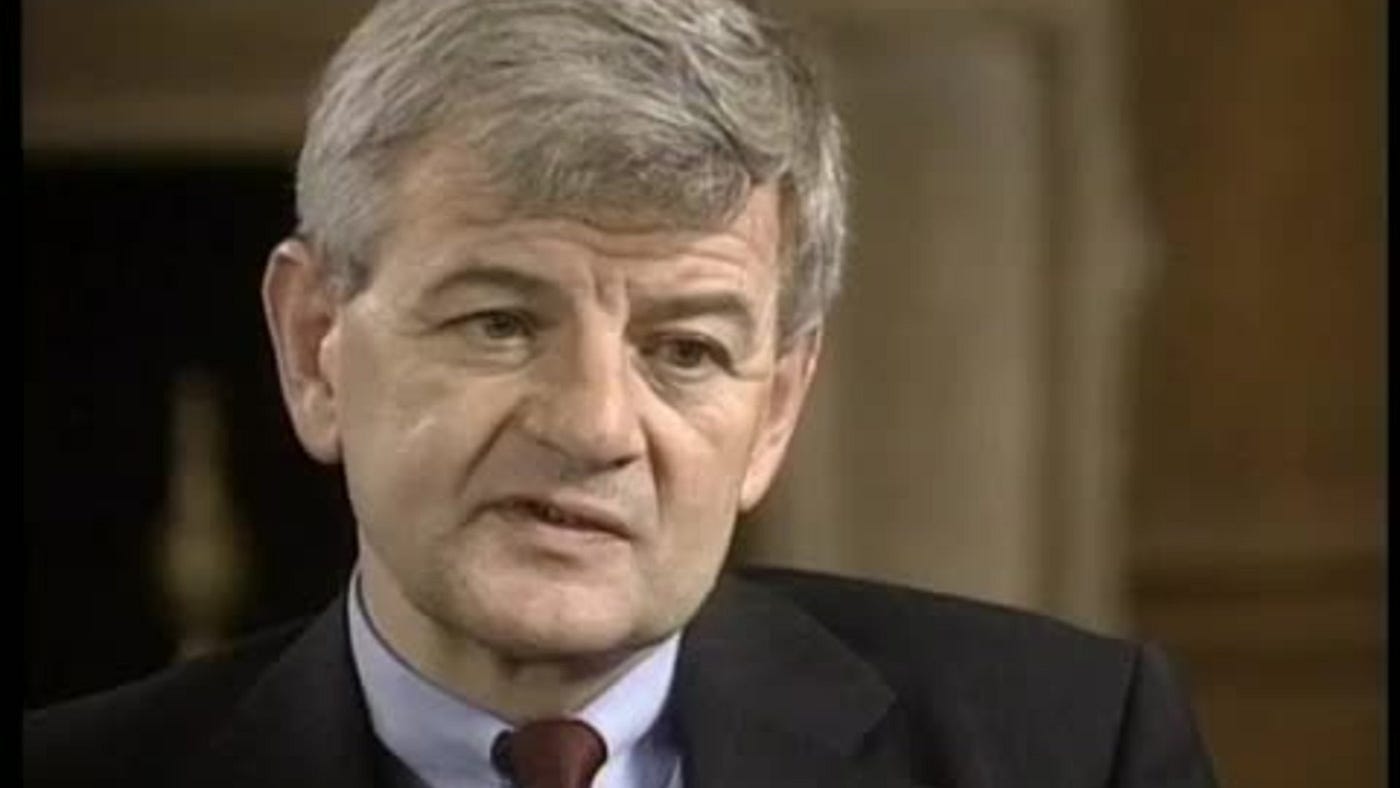
Joschke Fischer was more than just a dreamer, however: he was also a realist — and a prophet. When he called for a European Federation in 2000, the EU had only 15 members. Fischer observed that “the institutions of the EU were created for six member states. They just about still function with fifteen.”
He worried that, without a Constitution and a Federation structure, the EU would grow to become a non-transparent behemoth:
“How, with the system of institutions that exists today, are thirty states supposed to balance interests, take decisions and then actually act? How can one prevent the EU from becoming utterly intransparent, compromises from becoming stranger and more incomprehensible, and the citizens’ acceptance of the EU from eventually hitting rock bottom?”
Fischer turned out to be prescient. When the TCE failed to be ratified, and a European Constitution was beyond reach, the EU resorted to signing the Treaty of Lisbon, which, among other things, created the offices of the High Representative for Foreign Policy and Security (currently occupied by Kaja Kallas) and the President of the European Commission (currently occupied by Ursula von der Leyen) — both of whose appointments are now being condemned by EU member states as “back room deals” for their lack of transparency.
Indeed, a recent article in POLITICO likened the selection process for the top EU positions to “when cardinals select a new pope after backroom negotiations in the Vatican”.
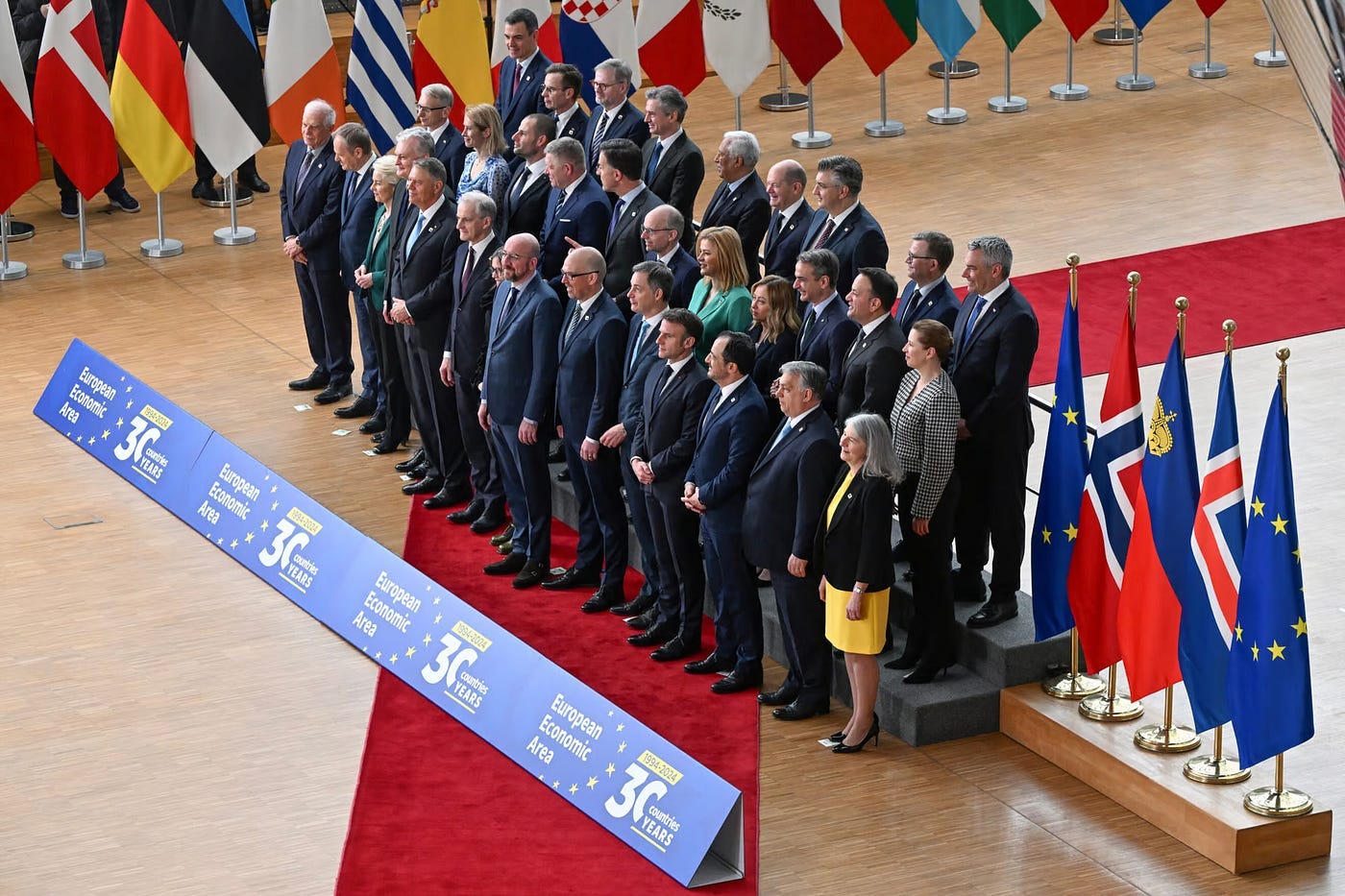
Europe, it seems, got the worst of both worlds: a centralised structure in Brussels with no transparency and no accountability through direct elections.
I covered this in my previous article, “NATO is a Farce, Part 7: Europe’s New Authoritarianism”.
Brexit changed the discussion
When the UK left the EU in 2016, the most ardent opponent to a “Federal Europe” was no longer an obstacle. So what did the EU leaders do with their newfound latitude? They immediately set about building up their military industrial complex, with total European defence spending reaching an all-time high in 2019.
Banging the drums of war
Starting in 2020, EU leaders have been warning of a coming war. Seizing upon the Ukrainian conflict, which the EU describe as “the return of high intensity warfare in Europe”, national leaders as well as the top bureaucrats in Brussels have been telling anyone and everyone that “war is coming”.
In her State of the Union address to the European Parliament in 2021, EC President and warmonger-in-chief, Ursula von der Leyen, said it was time for the EU to step up its investment in its own defence.
“It is time for Europe to step up to the next level,” she declared, adding “what we need is the European Defence Union.” This was building on her previous calls to create a “credible” EU army.
“Europe has to step up its industrial base … I’m a convinced transatlanticist and at the same time we have to build a strong Europe and that goes hand in hand,” von der Leyen told a panel at the Munich Security Conference in February.
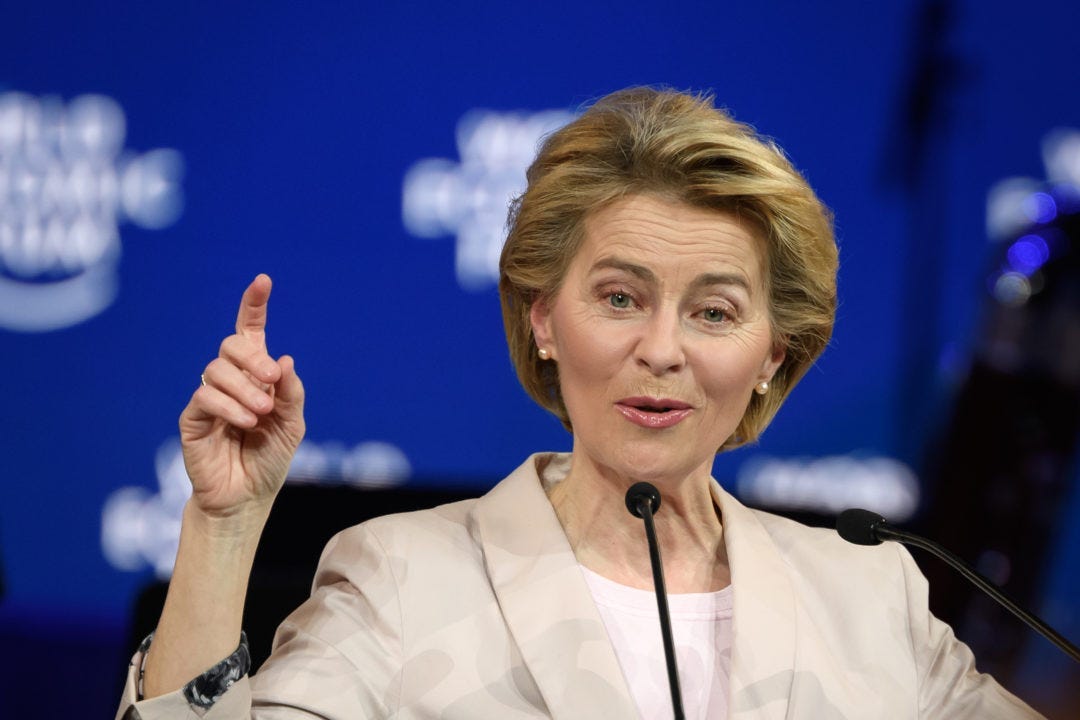
In 2022, Josep Borrell, the former head of Foreign Policy and Security, introduced the EU’s Strategic Compass — the Union’s comprehensive defence plan. In the lead off to his presentation, he intoned dourly that “Europe is in danger”.
In recent months, Borrell has doubled down on his warnings, saying in April that “full-scale war in Europe is no longer a fantasy. the European Union needs more funds to prepare for a potential full-scale conflict.
“The US umbrella that protected us during and after the Cold War may not be open all the time. Depending on who is in charge in Washington, we may not be able to rely on American support and ability to protect us. We have to build our joint capacity.”
He even told the Financial Times that “War is certainly approaching us.”

In March, outgoing European Council President Charles Michel was even more specific. If Europe wants to exist in peace it must shift to a “war economy” and significantly bolster defense capabilities in the face of the threat posed by Russia Michel warned. “If we want peace, we must prepare for war”, he wrote in an op-ed:
“Russia is a serious military threat to our European continent and global security. If we do not get the EU’s response right and do not give Ukraine enough support to stop Russia, we are next,” he added.
In a letter to the European Council members (the heads of all the EU states), Michel repeated his call for a new war economy:
“Now that we are facing the biggest security threat since the Second World War, it is high time we take radical and concrete steps to be defense-ready and put the EU’s economy on a “war footing”,” the EU Council president wrote.
Donald Tusk, Poland’s Prime Minister, also spread the Gospel of defense spending. In March he told Germany’s Die Welt: “We have to get used to the fact that a new era has begun: the pre-war era. I’m not exaggerating — it’s becoming clearer every day.”
Like all his EU colleagues, the solution was clear — more spending. Tusk, whose country spends the second highest percent of GDP on defense, urged his European allies to increase their defense spending, saying Europe must be “independent and self-sufficient in defense”.
And, like Borrell and others, he claimed this was necessary because of ongoing “uncertainty” around the long-term commitment from the U.S.
He concluded by saying that “”War is no longer a concept from the past. It is real, and it started over two years ago…literally any scenario is possible. We haven’t seen a situation like this since 1945”

Macron makes waves at the WEF
With the British out of the EU, France became the strongest military in the EU, and the only member state with its own nuclear weapons.
French President Emmanuel Macron has been calling for an increase in EU defense spending and European “strategic autonomy” for many years.
In a speech to French ambassadors in Paris in 2018, Macron said:
“Europe cannot rely on the United States only for its security. It’s up to us to meet our responsibilities and guarantee our security, and therefore European sovereignty.”
In 2022, Macron addressed a crowd of military industry professionals at the famous Eurosatory defence industry trade fair in Paris. It was the first time the French President had ever visited the world-leading defence fair, and he came with a message.
He said that France and the EU have entered “a war economy in which…we will have to organise ourselves for the long term.”
In keeping with the common theme of his EU colleagues, Macron stated that “Everything has changed” and “we can no longer live the way we did even a year ago.”
And then he made the military industrial economic pitch:
“Spending a lot to buy abroad is not a good idea. We should spend a lot, but we should think in the veins of European strategic autonomy,” he said. “We need to reinforce a European technology and defense-industrial base.”
Macron has continued to push for greater defence spending in Europe, and specifically to be financed through the issuance of Eurobonds. In January, he told the World Economic Forum:
“We need more public investment in Europe, so we should open a second phase of reinvestment as we did during the Covid crisis, and maybe daring again to have Eurobonds for priorities,” Macron said, addressing the World Economic Forum in Davos.
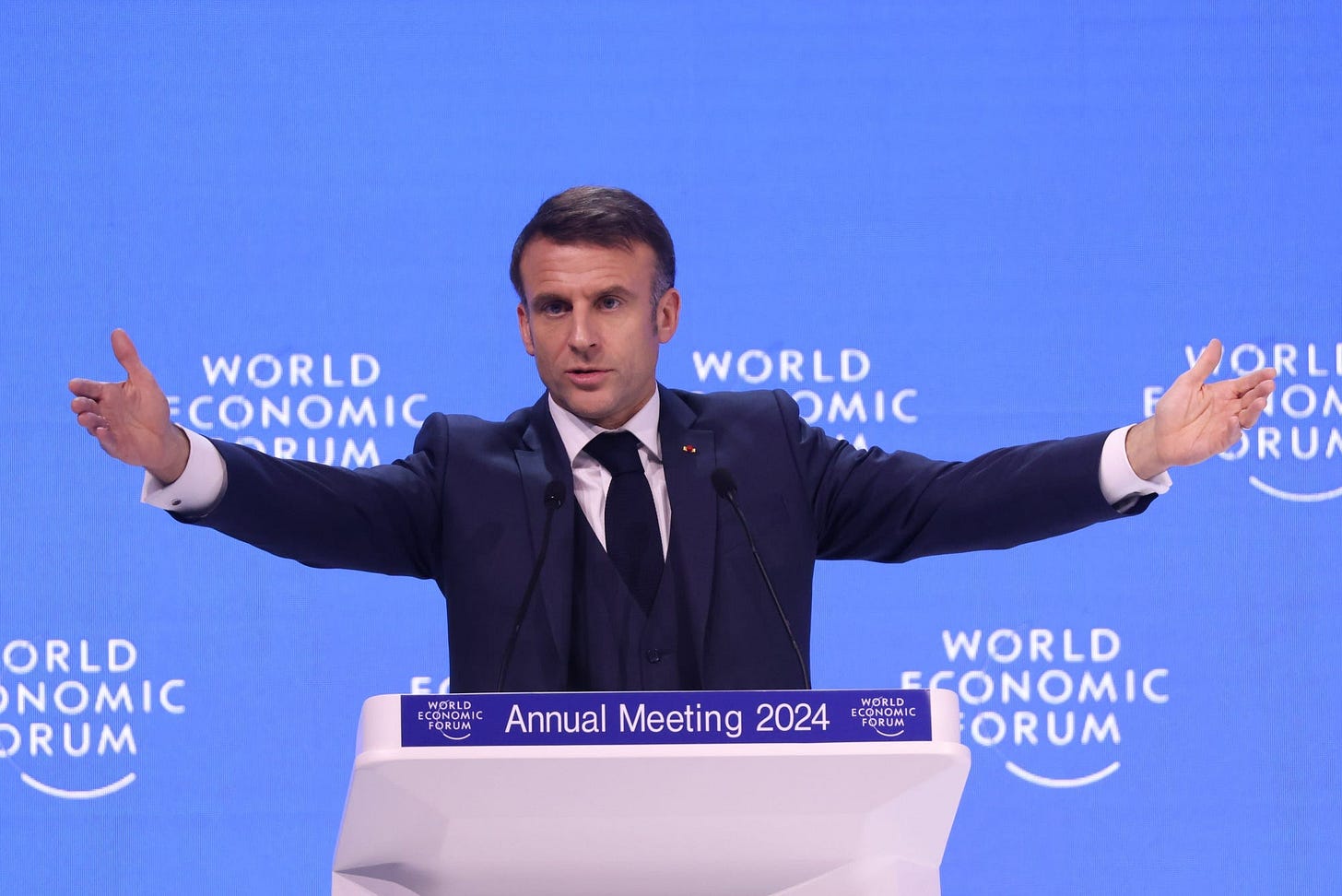
The solution: EU Defence Eurobonds
Macron is not alone in pushing the need for the EU to raise its own debt through the issuance of “Eurobonds” for defence “investment”.
Indeed, EC President Ursula von der Leyen was pushing the idea of Eurobonds for over a decade, going back to when she served as Germany’s Labour Minister. She told Der Spiegel in 2012: “”If there is a complete, common fiscal policy with effective debt control, then common bonds are an option”.
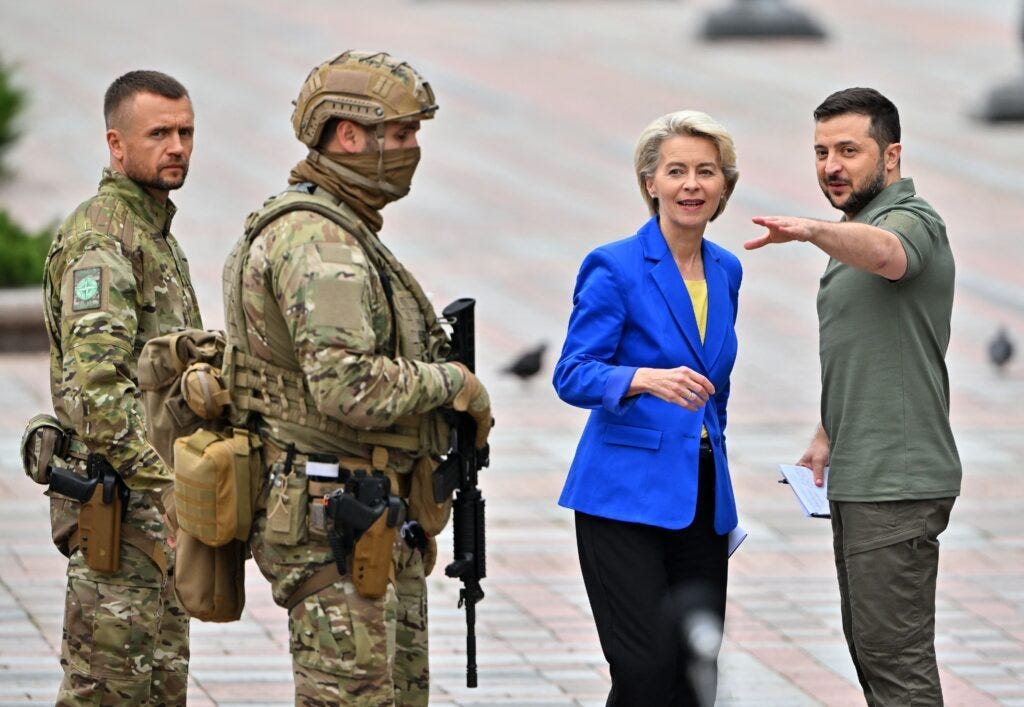
COVID Recovery bonds were a test run
At the peak of the COVID “pandemic”, when member states were closing their borders, Von der Leyen led the EU through the crisis through joint vaccine procurement and joint EU debt.
Von der Leyen and her pro-Eurobond cohorts were able to overcome objections from opponents and push through a ground-breaking bond issuance to fund a €750 billion COVID “Recovery Fund”.

Financial markets jumped on the Eurobond issue, claiming it pointed to “greater pan-European sharing of risk” and that it was “a step towards EU financial cohesion”.
Now, according to POLITICO:
“A number of EU countries are calling on her to take the same approach on defense. On top of joint procurement of weapons, countries such as France, Estonia and Poland are pushing for joint EU debt to raise more money for weapons.”
“European Council President Charles Michel also supports the idea,” POLITICO adds.
Indeed, the outgoing EU Council President is also a long-time fan of issueing common EU debt. In March he told reporters:
“The issuance of military eurobonds will allow us to obtain funds for the purchase of raw materials or investments in industry, which can be a powerful tool for strengthening our innovative technological base and industrial potential”.
The financial sector is again in an uproar with the news of a potential new issuance of Eurobonds. As Parliament Magazine explains:
“Seen as Europe’s own “Hamiltonian moment,” it [the bond issuance] marked the first true attempt to create common EU public finances to address mutual priorities.”

Eurobonds backed by the EU’s “Axis of War”
As I described in my previous article, “NATO is a Farce, Part 5: France and Estonia Form an ‘Axis of War’”, France and Estonia, specifically French President Emmanuel Macron and Estonian Prime Minister Kaja Kallas, have joined forces to push a very militaristic agenda.
The new “power couple” of the EU are both pushing strongly for the EU war bonds. Indeed, Kaja Kallas became the first prominent national leader to float the idea of joint EU bonds to finance increased military expenditure in March 2023, and “has since become the most vocal supporter of defence bonds”.
Little wonder, then, that Von der Leyen’s pick for the defence industry commissioner will come from Eastern Europe.

Resistance from the “Frugal Five”
According to POLITICO, the issuance of Eurobonds for defence is a “no-go” for some EU members, including Germany, the Netherlands and the Nordics. Indeed, the debate over debt has pitted the two largest economies against each other.
France’s Macron is of course 100% on board. Germany’s Scholz, however, is not. In fact, the German Chancellor and his allies (Netherlands, Nordics) took advantage of the current political upheaval in France to quash the latest move to push a debt decision through, according to Bloomberg News:
“A draft of the EU strategy document seen by Bloomberg says the bloc will use “innovative options” to finance an increase in defense spending and needs “a significant collective investment effort” to be able to compete with other nations. There’s no mention of joint borrowing.”

Sacrificing European social programs
Since WWII, European countries were able to invest in comprehgensive, robust social welfare programs by saving money on their defence budgets. As members of NATO, they relied on the US and its nuclear deterrence to protect them.
With the advent of the Ukraine conflict, however, and the spectre of a Trump presidency, the Europeans are looking to shift their spending away from social welfare to their “common defence”.
In addition to the dangers inherent in taking on common debt when most of Western Europe is spiralling into a recession, the move to create an EU military industrial complex could transform the entire European social system — for the worse.
As an article in The Telegraph put it:
“For years, defence spending stagnated while welfare costs surged. Now, bloated with Covid debt, feeling the pressures of ageing populations and confronted with voters furious over deteriorating public services, there is a big question mark over whether the Continent can change course.”
In fact, some of the more hawkish EU leaders are embracing this shift and actively calling for cuts to social welfare programs in order to fund the EU war machine:
“Danish Prime Minister Mette Frederiksen also mentioned that Europe must limit social welfare spending and cut taxes to counter a more aggressive Russia through sustained increases in defense and security funding.”
Germany, the leader of the “frugal five” opponents to taking on EU defence debt, is agonising over the question of shifting money away from its generous social welfare system.
Higher military spending combined with simultaneous welfare and pension cuts would strengthen right-wing populists, SPD lawmaker Ralf Stegner told Deutsche Welle (DW). Germans are understandably loathe to do anything to encourage the right wing.

While Germany is still lagging behind in its defence spending (it has yet to reach the NATO target of 2% GDP), it has promised to increase its defence budget, but only through normal financial means such as tax hikes — not borrowing.
For the pro-Eurobond warhawks, however, they believe that a real crisis, a real disaster, similar to the COVID pandemic but in terms of war, could change the minds of those recalcitrant “frugal five” regarding Eurobonds.
Ukraine is the EU’s “black swan” event
When it comes to war, and the preparation and militarisation of a society in order to wage war, governments often rely on a “black swan” event. This is a high-impact event that was “unexpected but later seen as inevitable”.
Pearl Harbor as a precedent
In WWII, the Roosevelt Administration had been itching to join the war on the side of the United Kingdom, but the US public was strongly against getting involved in “a European war”. It took a surprise attack on the American fleet at Pearl Harbor, a disaster of epic proportions, to shake the American people out of their isolationism and reluctance to get involved.
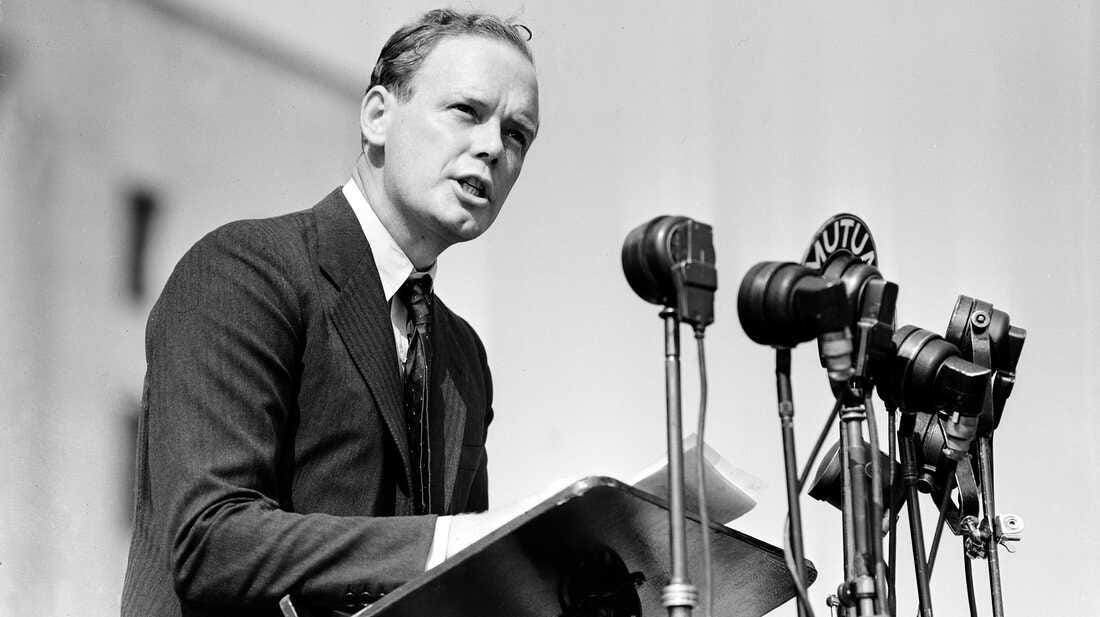
“9/11” as a precedent
Decades later, when the Neocons in Washington formed their “Project for a New American Century” (PNAC) to push for American military campaign to conquer the Middle East, they realised that the American public would not willingly back such a “war of choice”.
In their September 2000 manifesto, “Rebuilding America’s Defenses”, they acknowledged the need for a black swan event, what they called “some catastrophic and catalyzing event — like a new Pearl Harbor”.
Just one short year later, they got their “new Pearl Harbor” with the terrorist attacks on the World Trade Center and the Pentagon on September 11, 2001.

Regardless of how and why those attacks were organised and executed, the result of that “black swan event” was clear: the United States went immediately on a “war footing” with a massive expansion of the internal surveillance and police state, combined with a series of disastrous, deadly and illegal military campaigns abroad — all in the name of a “war on terror”.
This “war” ultimately led to the deaths of 6 million people.

A boon to the military industrial complex
The immediate result of 9/11 for the US defence industry was a 10% increase in the defence budget. Following 9/11, the US has spent $14 TRILLION on its defence, with half ($7 trillion) going to for-profit defence contractors.
“Another recent report from Brown University’s Costs of War Project found that the pricetag for the global war on terror stands at over $8 trillion”.
Not a bad pay-day.
NOW IT ALL MAKES SENSE
In my previous article, “NATO is a Farce, Part 4: Reviving Old Hatreds to Create New Conflict”, I asked myself why the Europeans were fixated so decidedly on Ukraine, why they were stoking Russophobia and portraying Russia as evil and expansionistic, when surely they must know the truth: that Russia does not pose any “existential” threat to Europe, and indeed does not even want to “conquer” Ukraine.
In my article, “NATO is a Farce, Part 6: Europe’s New Militarism”, I further explained how European leaders were using the excuse of a phoney “existential threat” from Russia to militarise, creating a “new Cold War” mentality at the highest levels of the EU.
I was wondering WHY all this was happening, and now I know. It is all about restructuring the European Union itself.
By creating an existential threat from Russia in the minds of the EU citizens, they are able to turn Ukraine into a “black swan event”.
By framing Ukraine’s conflict with Russia as a “pan-European” conflict with Russia, the “disaster” that is on the horizon in Ukraine becomes the galvanising force to transform European society into a permanent wartime society — much like 9/11 transformed America.
Towards a “United States of Europe”
Those who would want to see a “Federal Europe” are already excited about the prospect of leveraging the Ukraine conflict to
Joschke Fischer, whom I mentioned above, was an early proponent of the United States of Europe concept, including direct election of European Commission leaders. He quickly seized on the Ukraine crisis to revive his “Federal Europe” agenda.
In May, 2022, Fischer wrote an op-ed entitled, “How the EU Must Change”, in which he called for the EU to adopt a new, more “federal” structure:
“Under its current institutional and legal framework, the EU can pursue its geopolitical interests only to a very limited extent, if at all. The EU of the future therefore will need a more flexible structure, with a quasi-confederative arrangement surrounding a federated core.”
Some weeks later, Fischer doubled down on his idea of the EU becoming one single, cohesive, united geopolitical entity:
“Europe will need to transform its approach to security…This task, which must be shared equally by Nato and the EU, should transform the EU into a geopolitical player…The EU’s development into a political, security, and defense union, rather than just an economic and monetary union, offers an ideal opportunity.”
The power is in the purse
If the transatlanticist warhawks in the EU can convince the “frugal five” that Russia poses an “existential” threat on par with the COVID pandemic, then they can overcome their objections to issuing common EU debt in the form of Eurobonds — perhaps framed as European “war bonds” such as many allied countries issued in WWII.
Once the issuance of Eurobonds becomes commonplace, can a common EU “Treasury” be far behind?
Authoritarianism, Militarism, and the Death of Europe
One thing is certain: given the current trend in Brussels, and the hysterical howling of the warhawks about an “existential threat” from Russia, a European “Military Industrial Complex” (MIC) similar to that of the United States will soon come to be.
But, unlike the United States, the people in charge of this MIC will not be popularly elected. Rather, they wil be the unelected authoritarians of the European Commission.
Ursula von der Leyen, as the unelected EC President, will work together with Kaja Kallas, the unelected High Representative for Foreign Policy and Security and the unelected Commissioner for Defence Industry to build a truly fascistic war machine whose main purpose will be to (1) act as a self-funded vassal to the United States military empire, and (2) generate profits for European defence contractors.
A disaster for European citizens
There is a slow moving disaster on its way to destroy the citizenry of Europe. In the coming years, the EU will become a supranational entity, exercising power over the entire EU population through its power to TAX.
Moreover, this taxation will go towards fuelling a perpetual war machine that will, in turn, drain the resources of European societies and funnel them towards a futile, dangerous, and ultimately pointless pursuit of militarism — as is currently the case in the United States.
The solution? PEACE.
The way to avoid this disaster is simple: achieve peace in Ukraine. Make a deal with Putin, end the war, remove the need for more spending on the military. Realise that Russia is NOT the Soviet Union, and Putin is NOT Peter the Great — nor is he Stalin.
Europeans must reject the bellicosity of the Eastern European nations and go back to diplomacy and rapprochement with Moscow.
And — most importantly — the European Union must declare independence from the ~~~United States.
More on this later :-)
#End
If you liked this post, please consider leaving me a tip! Donations support my independent, ad-free writing.
===========================================================================











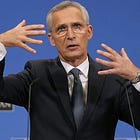




How do we stop these war mongers? The rest of the world wants and needs peace. Not more war, genocide and austerity at home.
An unelected, corrupt Von der Stooge in charge of doling out European taxpayers money to military profiteers. Hmmmm.
What….could…possibly…be….wrong…with….this?
https://www.trtworld.com/magazine/corruption-scandal-hangs-over-eu-president-ursula-von-der-leyen-33871